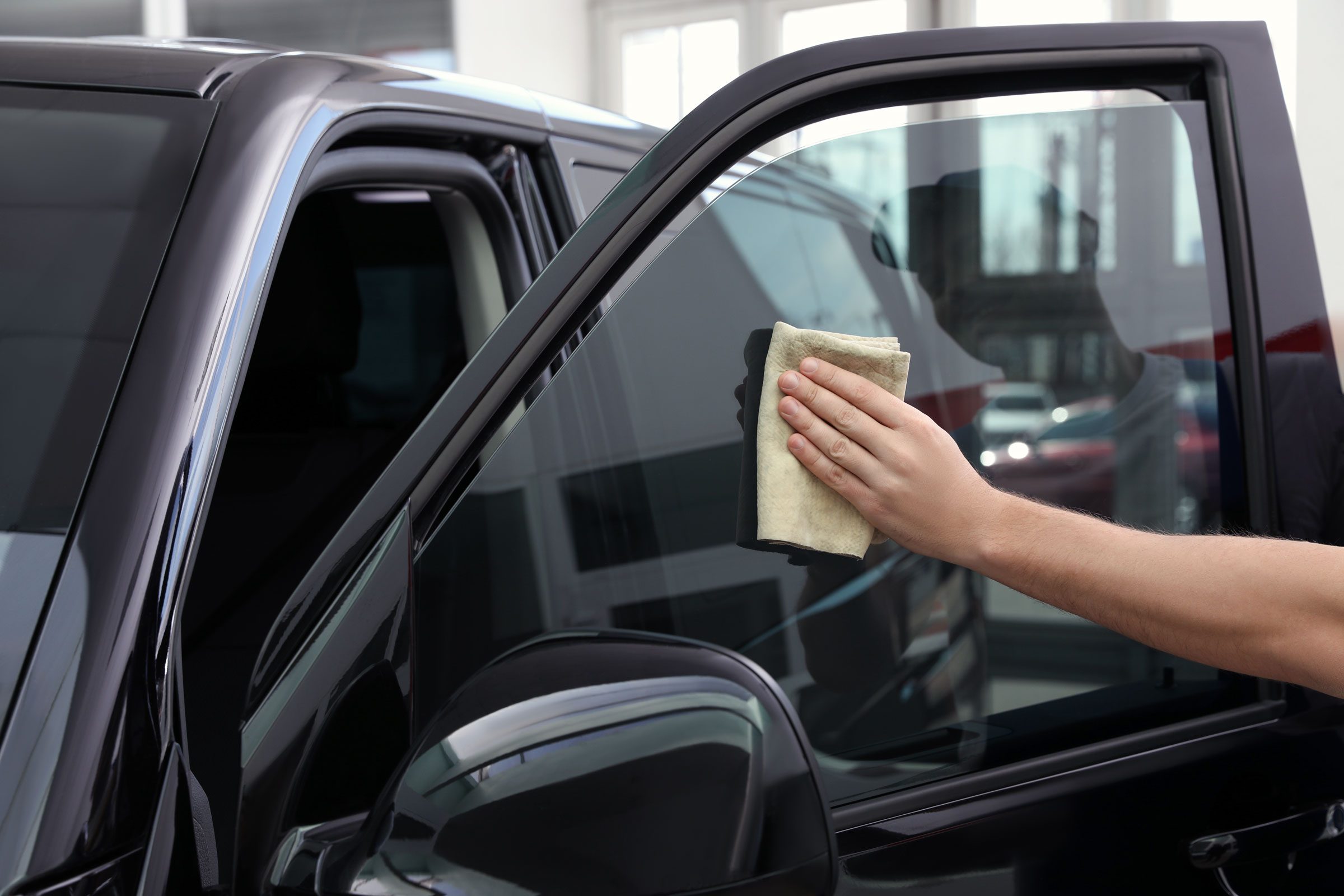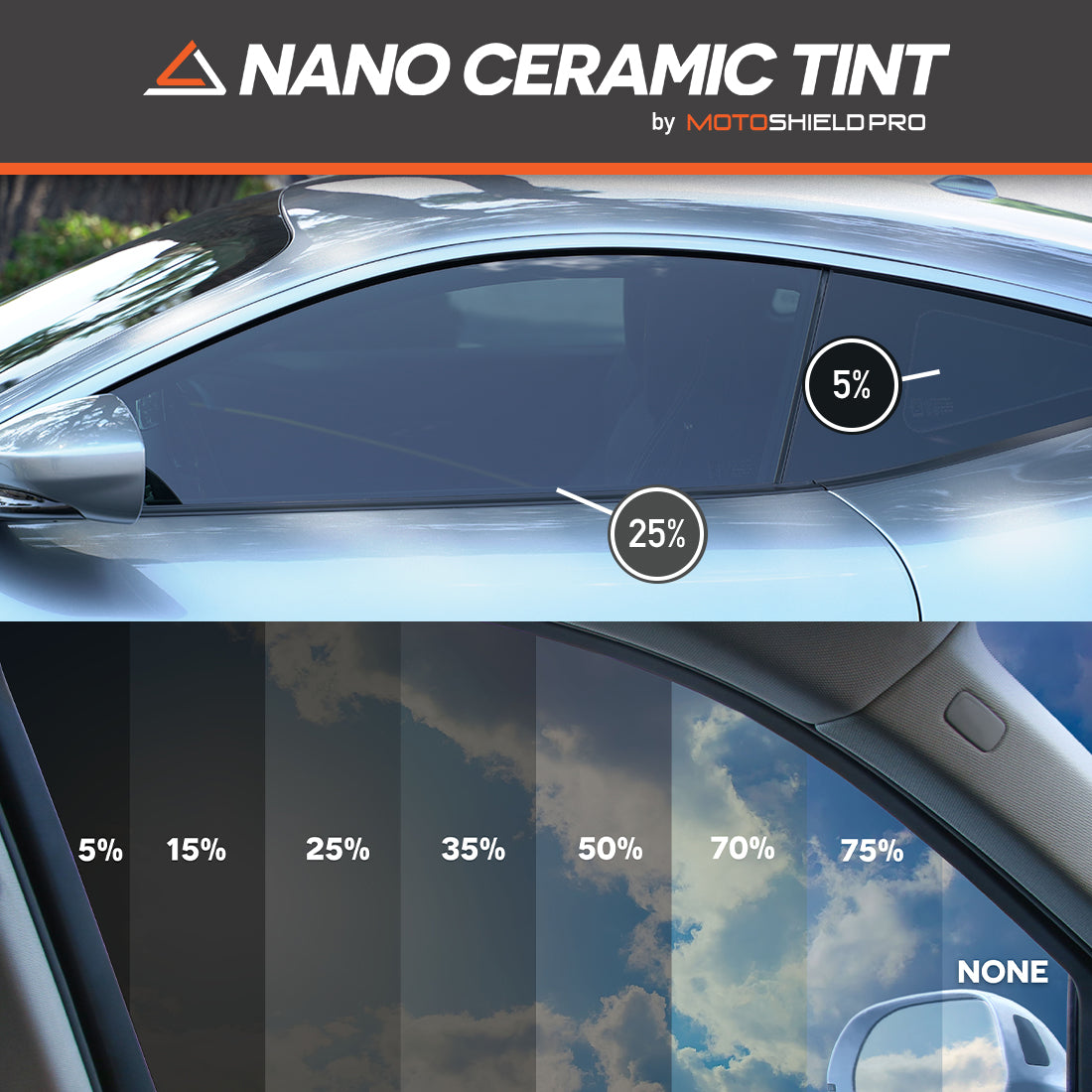Window Tinting Options: Locate the Right Shade for Your Design and Demands
Picking the appropriate window tint for your lorry entails a mindful factor to consider of numerous variables, consisting of individual aesthetics, functional needs, and lawful constraints. With alternatives varying from light tintss that provide minimal privacy to darker tones that boost privacy, the options can be overwhelming. window tinting. Understanding the implications of noticeable light transmission (VLT) percents and the advantages of different materials is essential in making an informed option. As you ponder your choices, you may wonder just how these aspects interplay to create not simply an appearance, but a customized experience when traveling.
Comprehending Window Tinting Levels
When considering window tinting, it is vital to recognize the different degrees of tint readily available, as they substantially affect both appearances and performance. Window tinting is categorized based upon Noticeable Light Transmission (VLT) portions, which show the amount of light permitted to go through the glass. The VLT percent can range from extremely light (over 70%) to very dark (below 5%)
The key levels of tint consist of clear, which offers UV defense without altering exposure; light tint (over 50% VLT), which slightly decreases glow while maintaining exposure; tool tint (around 35% VLT), striking a balance in between personal privacy and light transmission; and dark tint (below 20% VLT), supplying significant privacy and warmth decrease but restricting exterior visibility.
Recognizing these degrees is important as they can influence driving safety, legal conformity, and individual comfort. Furthermore, local guidelines frequently dictate permitted tint levels, differing by state or town. For that reason, prior to selecting a tint, it is a good idea to study and ensure adherence to these policies while thinking about personal choices for design and practical advantages.
Popular Tint Shades Explained

Among the most preferred options is the traditional dark tint, generally ranging from 20% to 5% VLT (Noticeable Light Transmission) This shade provides optimum personal privacy and a sleek, innovative appearance. It efficiently obstructs UV rays and heat, making it optimal for bright climates, though it may restrict presence during the night.
On the other hand, lighter tones such as 35% or 50% VLT provide a much more refined look while still offering some degree of personal privacy. These tones are perfect for those seeking a balance in between visual appeals and performance, as they enable far better visibility and adhere to numerous legal standards.
One more emerging choice is the ceramic tint, which can can be found in a selection of shades - window tinting. It offers exceptional warm being rejected and UV defense without dramatically altering the vehicle's appearance

Lawful Regulations for Window Tinting
Understanding the lawful regulations bordering window tinting is important for lorry owners aiming to personalize their cars. Each state in the U.S. has details legislations controling the darkness or lightness of window tintss, frequently gauged by Visible Light Transmission (VLT) percentage. VLT describes the quantity of light that can go through the glass and the movie combined.
In several states, guidelines dictate different VLT portions for numerous windowss, including front windshields, side windowss, and back windowss. Some states might allow a tint of 70% VLT for windshields while allowing darker tintss for back windowss. Additionally, specific states have limitations on reflective tintss, which can develop glow for other drivers.
Failure to conform with these guidelines can bring about fines, mandated removal of the tint, and enhanced insurance policy costs. Lorry proprietors should speak with regional legislations or state DMV web sites to guarantee they are within lawful restrictions prior to continuing with installation. Understanding these policies not just aids stay clear of lawful repercussions but additionally guarantees a safe driving experience.
Advantages of Various Tint Products
Checking out the advantages of different tint materials reveals significant advantages that can enhance both the capability and visual allure of an automobile. Each visit the site product uses unique qualities suited to specific needs and choices.
Dyeded window films are popular for their price and capability to minimize glow. Metalized films, on the various other hand, offer premium warm reduction and UV security due to their reflective homes.
Ceramic window films stand for a premium option, supplying extraordinary warm being rejected while maintaining presence. They are non-metallic, therefore avoiding any type of signal interruption, and are highly resilient, withstanding scrapes and fading over time. Furthermore, ceramic films do not have dyes, making certain a longer-lasting appearance.
Lastly, crossbreed films incorporate components from dyeded and metalized alternatives, supplying a balanced efficiency in regards to warmth denial, glare decrease, and price. Each tint product serves special functions, permitting automobile owners to select the most effective fit for their lifestyle and visual choices, eventually improving their driving experience.
Choosing the Right Tint for You
Locating the right window tint entails thinking about different variables, including personal preferences, automobile type, and regional laws. Evaluate your individual style use this link and desired degree of privacy, as these will lead your option of tint shade. Darker tintss supply improved personal privacy however might not be ideal for all drivers, particularly those who like an even more open feel inside their automobile.
Following, consider your lorry type, as the dimension and shape of windowss can affect the effectiveness of specific tintss. For instance, larger windowss might take advantage of reflective tintss that reduce glow while smaller sized windowss may be extra fit to dyeded films that offer refined appearances.
In addition, it's critical to examine regional laws concerning window tinting. Lots of states impose restrictions on the allowed darkness and reflectivity, especially for front windowss. Conformity with these regulations is important to stay clear of fines and make certain security.
Last but not least, examine the tint material that best matches your needs. Alternatives consist of dyeded, metalized, ceramic, and crossbreed films, each offering special advantages relating to heat denial, UV protection, and durability. By thinking about these elements, you can with confidence choose a home window tint that lines up with your design and functional demands.
Verdict
Finally, picking the ideal window tint calls for careful consideration of numerous elements, consisting of VLT percentages, regional guidelines, and the desired aesthetic. Different tint materials supply unique benefits that can boost vehicle convenience and security. By completely comprehending the available options and straightening them with functional requirements and private preferences, one can attain an ideal equilibrium in between style and functionality in window tinting options.
Picking the suitable window tint for your automobile includes a careful factor to consider of various variables, including personal looks, functional requirements, and lawful restrictions. Each state in the U.S. has particular regulations controling the darkness or agility of window tintss, usually gauged by Visible Light Transmission (VLT) portion. Some states might allow a color of 70% VLT for windscreens while permitting darker tintss for rear windowss.Discovering the right window tint involves taking into consideration numerous aspects, consisting of personal choices, automobile type, and neighborhood see this site laws.In conclusion, choosing the suitable window tint requires mindful factor to consider of numerous aspects, including VLT portions, regional laws, and the wanted aesthetic.